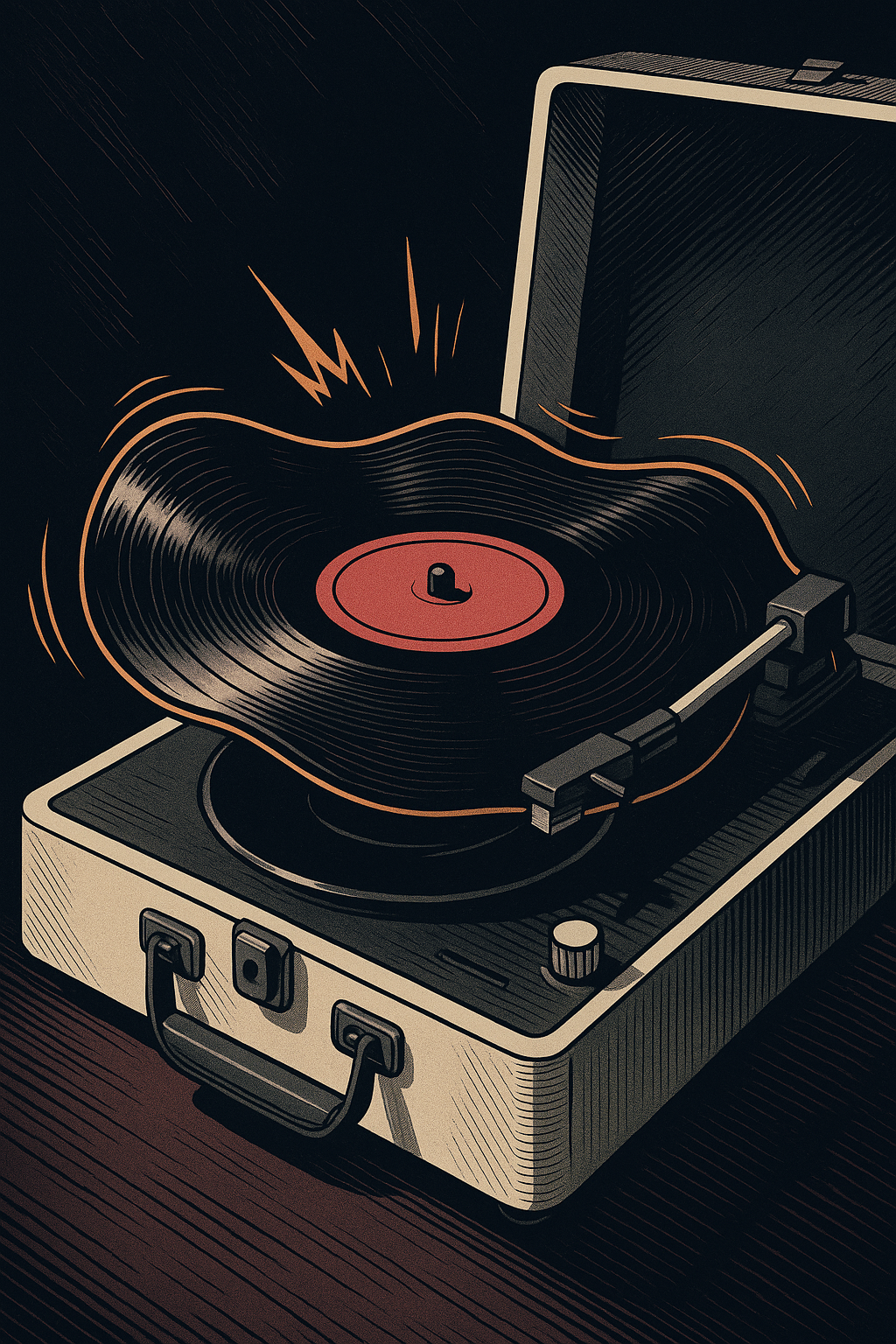The warm, analog embrace of vinyl. It’s a siren song that’s luring a whole new generation into its textured grooves. And why not? In a world of ephemeral digital streams, the tangible ritual of placing a record on a platter, the gentle drop of the needle, and the immersive sound that follows offer a uniquely satisfying experience. But for the curious newcomer, the path to vinyl nirvana can seem daunting, paved with audiophile jargon, complex component matching, and the looming specter of significant financial outlay. This is where the often-maligned all-in-one (AIO) record player steps in, not as a compromise, but as a surprisingly brilliant gateway.
Now, let’s be clear. Whisper "all-in-one record player" in certain audiophile circles, and you might be met with a polite (or not-so-polite) cough, a dismissive wave, or a lecture on the inherent sonic sacrifices. And while it's true that an AIO unit isn't going to sonically spar with a meticulously curated system of separates costing thousands, to dismiss them outright for beginners is, frankly, a form of gatekeeping. It ignores human nature, the practical realities of modern life, and the very essence of what it means to begin a journey.
Deconstructing the "All-in-One": Simplicity by Design
So, what is an all-in-one record player? At its core, it’s a single unit that integrates the turntable mechanism, a phono preamplifier (to boost the tiny signal from the cartridge), an amplifier (to power the speakers), and the speakers themselves. Think of it as the modern descendant of the console stereos that graced living rooms in decades past, but generally more compact and accessible.
The inherent design philosophy of an AIO is integration, which inevitably means some components won't be as specialized or robust as their standalone counterparts. This isn't a controversial statement; it's a practical engineering reality. But for the beginner, this integration is precisely where the magic lies.
The Unassailable Advantages for the Aspiring Vinyl Enthusiast
Let's break down why these units punch above their perceived weight class for those just starting out:
-
Simplicity & Accessibility: The "Plug-and-Play" Panacea
Human beings are wired for ease of entry. When faced with a new hobby, a steep learning curve or a complicated setup process can be the biggest deterrent. AIOs obliterate this barrier. Unbox it, plug it in, put on a record. That’s it. There’s no fretting over matching speaker impedance with amplifier wattage, no confusion about phono stage compatibility, no tangled mess of interconnects. This "just works" experience is invaluable. It allows the newcomer to focus on the music and the experience, not the technicalities – at least, not yet.
-
Cost-Effectiveness: The "Wallet-Friendly Welcome Mat"
Let’s talk brass tacks. Venturing into vinyl can feel like a financial commitment. A decent entry-level component system (turntable, preamp, amplifier, speakers) can easily run into many hundreds, if not thousands, of dollars. An AIO offers a taste of the vinyl life for a fraction of that. This lower initial investment isn't just about being "cheap"; it’s about reducing the perceived risk. It allows someone to explore their interest without a massive upfront declaration of audiophile intent. And, crucially, it leaves more in the budget for what this is all about: buying records.
-
Space Efficiency: The "Apartment Dweller's Ally"
In an era of shrinking living spaces, a multi-component hi-fi system can be a spatial luxury not everyone can afford. AIOs, with their compact footprint, can fit comfortably on a shelf, a desk, or a small credenza. This practicality makes vinyl accessible to those in dorm rooms, small apartments, or any situation where dedicated audio real estate is at a premium.
-
Aesthetic Cohesion: The "Design-Conscious Debut"
Many modern AIOs come in stylish, self-contained designs. From retro-chic to minimalist modern, they can be an attractive addition to a room's decor. This appeals to a broader audience who see vinyl not just as an audio format, but as part of a lifestyle, where the visual and tactile elements are just as important as the sonic ones.
Addressing the Elephants in the Room (For Beginners, Specifically)
The common criticisms leveled at AIOs – sound quality, record wear, and limited upgradability – are valid when compared to higher-end gear. But let's reframe them through the lens of a beginner:
-
Sound Quality: Will an AIO transport you to the front row of a live concert with breathtaking realism? Probably not. But will it play your records and provide a sound that is enjoyable, engaging, and fundamentally different from compressed digital audio? Absolutely. For someone whose ears aren't yet tuned to the subtle nuances that audiophiles chase, the sound from a decent AIO is often more than "good enough"; it's a revelation. The journey of a thousand sonic miles begins with a single step, and an AIO is a perfectly respectable first step. It's about discovering the joy of vinyl first. The quest for ultimate fidelity can, and often does, come later. (As your passion deepens, you'll naturally start to explore the kind of meticulously engineered components, like dedicated phono stages and amplifiers, that form the heart of a true audiophile setup – a philosophy we at XJ-HOME deeply value in our own pursuit of sonic excellence.)
-
Record Wear: The fear of "groove grinding" styli on cheap AIOs is a persistent one, often rooted in the reputation of very low-quality, toy-like players of the past. While caution is always wise, many contemporary AIOs, especially from reputable brands, use decent quality cartridges and styli (like the widely-used Audio-Technica ATN3600L or similar). They are designed with tracking forces that, while perhaps not as feather-light as a high-end audiophile cartridge, are generally within safe parameters for casual listening. For a beginner's initial collection – which might consist of used LPs or new, non-collectible pressings – the risk of catastrophic damage from a decent AIO is often overstated. The key is to avoid the absolute bottom-of-the-barrel, sub-$50 suitcase players. For more on how styli interact with grooves, you can delve into resources like the Vinyl Record Guide's explanation of stylus types.
-
Limited Upgradability: This is largely true. AIOs are, by nature, closed systems. You can't typically swap out the internal amplifier or upgrade the built-in speakers. But this "limitation" can also be seen as a virtue for the beginner. It removes another layer of complexity and potential "analysis paralysis." An AIO is not meant to be the final destination; it's a launching pad. The experience gained – what you like, what you don't, what you feel is missing – is invaluable data that informs your next purchase, should you choose to dive deeper.
The AIO as an Educational Tool
Beyond just playing records, an AIO serves as an excellent, low-stakes educational tool. It provides hands-on experience with:
-
The Vinyl Ritual: Learning to handle records with care, understanding the basic mechanics of a turntable, the satisfying physicality of the format.
-
Developing an Ear: Even on a modest system, beginners will start to notice differences between records – a well-mastered pressing versus a muddy one, the warmth of an analog recording, the surface noise of a well-loved LP. This is the nascent stage of critical listening.
-
Fueling the Passion: A positive, accessible first experience is crucial. If getting started is too hard or too expensive, the spark can die before it even catches. An AIO fans that initial flame.
Knowing When to Fly the Nest
There will come a time, for many, when the limitations of an AIO start to become apparent. You might crave more detail, a wider soundstage, deeper bass, or the ability to customize your sound. These are the signs that you've extracted the full value from your entry-level setup and are ready to explore the vast, rewarding world of component hi-fi.
This is the natural progression. The AIO has served its purpose brilliantly, providing an accessible, enjoyable, and educational entry into the world of vinyl. When that desire for a more profound sonic experience and a customizable audio journey becomes undeniable, exploring brands and philosophies dedicated to the art of high-fidelity audio, such as our own approach at XJ-HOME (https://xenonjade.com), can unlock entirely new dimensions of auditory discovery.
An Unapologetic Nod to the Humble AIO
So, let's give the all-in-one record player its due. It’s not the pinnacle of audiophile achievement, nor does it pretend to be. But it is an essential and often underestimated player in the vinyl ecosystem. It democratizes access, welcomes newcomers with open arms, and provides a simple, joyful, and affordable way to experience the magic of records.
In the grand pursuit of sound, it’s easy to get caught up in the chase for perfection and forget the simple joy of listening. The best record player for a beginner isn't necessarily the one with the most esoteric components or the most eye-watering price tag. It's the one that gets them to drop the needle and listen. And for many, that journey begins, quite wonderfully, with an all-in-one.





Leave a comment
All comments are moderated before being published.
This site is protected by hCaptcha and the hCaptcha Privacy Policy and Terms of Service apply.